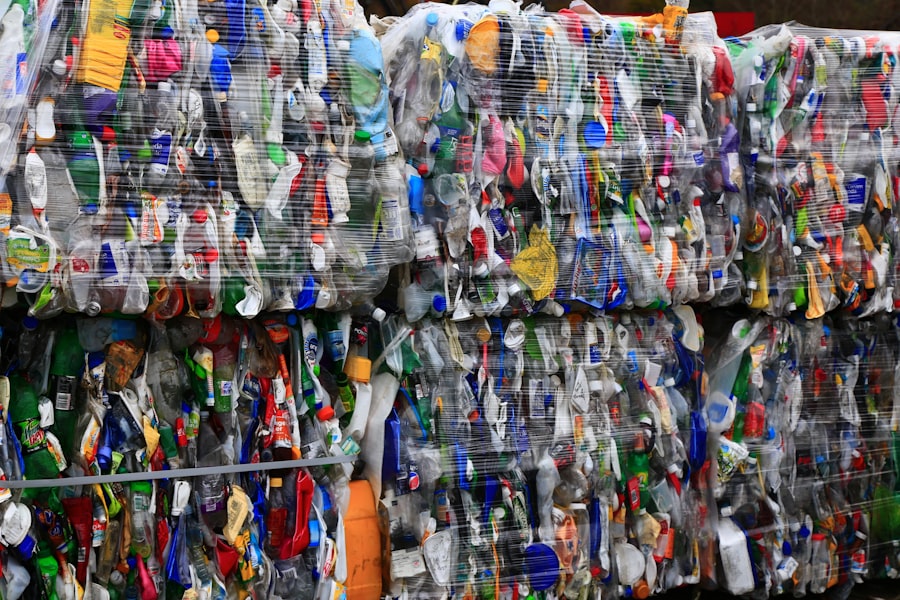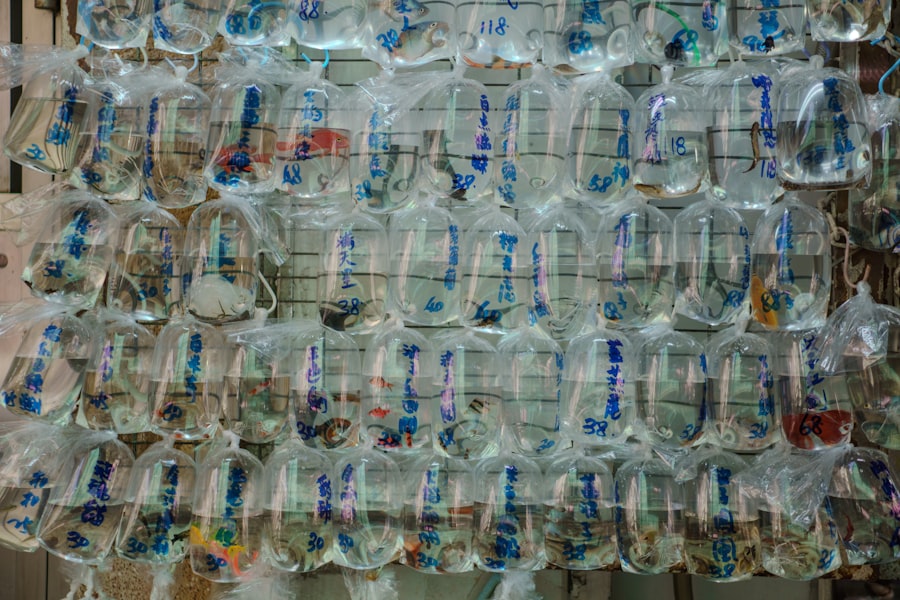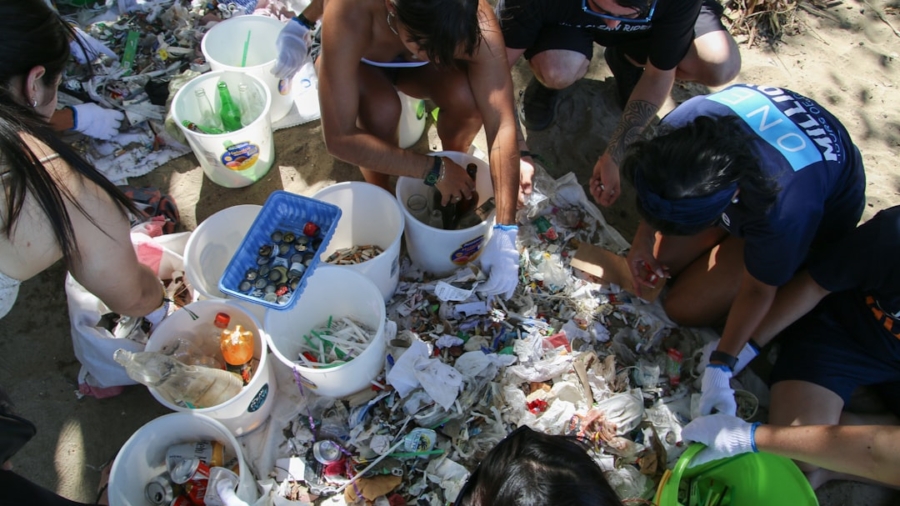Plastic waste has emerged as one of the most pressing environmental challenges of the 21st century. With millions of tons of plastic produced annually, a significant portion ends up in landfills, oceans, and other ecosystems, leading to dire consequences for wildlife and human health. The ubiquity of plastic in modern life, from packaging to consumer goods, has made it increasingly difficult to manage its lifecycle effectively.
As awareness of the environmental impact of plastic pollution grows, so does the urgency for innovative solutions aimed at reducing plastic waste. This article delves into various strategies and case studies that highlight effective methods for mitigating plastic waste, showcasing the importance of collective action and innovative thinking in addressing this global crisis. The need for plastic waste reduction is underscored by alarming statistics.
According to the United Nations, approximately 300 million tons of plastic are produced each year, with an estimated 8 million tons entering the oceans annually. This staggering figure not only threatens marine life but also disrupts entire ecosystems and poses risks to human health through the food chain. In response to this crisis, governments, businesses, and communities worldwide are exploring a range of initiatives designed to minimize plastic use and promote sustainable alternatives.
By examining successful case studies and innovative practices, we can gain insights into effective strategies for reducing plastic waste and fostering a more sustainable future.
Key Takeaways
- Plastic waste reduction is a critical issue that requires innovative solutions and sustainable practices.
- The case study provides a comprehensive overview of successful strategies for reducing plastic waste.
- Innovations such as biodegradable plastics and recycling technologies are making significant strides in plastic waste reduction.
- Implementation of these innovations has resulted in measurable reductions in plastic waste and environmental impact.
- Despite progress, challenges such as lack of infrastructure and consumer behavior remain significant barriers to achieving widespread plastic waste reduction.
Overview of the Case Study
One notable case study in the realm of plastic waste reduction is the initiative undertaken by the city of San Francisco, California. In 2007, San Francisco became the first major city in the United States to implement a comprehensive ban on plastic bags in retail establishments. This bold move was part of a broader strategy aimed at reducing waste and promoting environmental sustainability.
The city’s approach involved not only banning single-use plastic bags but also encouraging the use of reusable bags through public awareness campaigns and incentives for businesses. The implementation of this ban was met with both support and resistance. Proponents argued that reducing plastic bag usage would significantly decrease litter and pollution, while opponents raised concerns about the economic impact on retailers and consumers.
Nevertheless, San Francisco’s commitment to reducing plastic waste extended beyond just bags; it included initiatives to promote composting and recycling, thereby creating a holistic approach to waste management. The city’s efforts serve as a compelling example of how local governments can take decisive action against plastic pollution while fostering community engagement and environmental stewardship.
Innovations in Plastic Waste Reduction

Innovations in technology and materials science are playing a crucial role in the fight against plastic waste. One promising development is the emergence of biodegradable plastics made from renewable resources such as cornstarch or sugarcane. Unlike traditional plastics that can take hundreds of years to decompose, these biodegradable alternatives break down more quickly under specific environmental conditions.
Companies like NatureWorks have pioneered the production of polylactic acid (PLA), a biodegradable plastic derived from corn that can be used in various applications, from packaging to disposable cutlery. Another innovative approach involves the use of advanced recycling technologies that can convert plastic waste back into usable raw materials. Chemical recycling processes, such as pyrolysis and depolymerization, allow for the breakdown of plastics into their original monomers or other valuable chemicals.
This method not only reduces the volume of plastic waste but also creates a closed-loop system where materials can be reused indefinitely. Companies like Brightmark are leading the charge in this area, developing facilities that can process large quantities of plastic waste into fuel and other products, thereby reducing reliance on virgin materials.
Implementation and Results
The implementation of San Francisco’s plastic bag ban provides valuable insights into the effectiveness of policy-driven approaches to waste reduction. Following the ban’s introduction, studies indicated a significant decrease in plastic bag usage among retailers and consumers alike.
This dramatic reduction not only contributed to cleaner streets and parks but also fostered a cultural shift towards more sustainable practices among residents. Moreover, the city’s comprehensive approach to waste management included educational campaigns aimed at informing residents about the importance of reducing plastic consumption. These initiatives emphasized the environmental impact of plastic pollution and encouraged individuals to adopt more sustainable habits, such as using reusable bags and participating in recycling programs.
The success of San Francisco’s efforts has inspired other cities across the United States and around the world to consider similar measures, demonstrating that effective implementation can lead to tangible results in reducing plastic waste.
Challenges and Limitations
Despite the successes achieved in various initiatives aimed at reducing plastic waste, significant challenges remain. One major hurdle is consumer behavior; many individuals continue to rely on single-use plastics due to convenience or lack of awareness about their environmental impact. Changing deeply ingrained habits requires sustained educational efforts and incentives that encourage individuals to adopt more sustainable practices.
Additionally, there is often resistance from industries that rely heavily on plastic packaging, which can complicate efforts to implement bans or restrictions. Another limitation lies in the infrastructure required for effective recycling and waste management. Many regions lack adequate facilities for processing recyclable materials or composting organic waste, leading to increased landfill use.
Furthermore, contamination of recyclable materials—often caused by improper disposal—can render entire batches unrecyclable, undermining efforts to reduce plastic waste. Addressing these challenges necessitates collaboration between governments, businesses, and communities to develop comprehensive strategies that enhance recycling capabilities and promote responsible consumption.
Future Implications and Sustainability

The future implications of successful plastic waste reduction initiatives extend far beyond immediate environmental benefits; they also encompass economic opportunities and social change. As awareness of plastic pollution continues to grow, there is an increasing demand for sustainable products and practices across various sectors. This shift presents opportunities for businesses to innovate and develop eco-friendly alternatives that cater to environmentally conscious consumers.
For instance, companies that invest in sustainable packaging solutions or biodegradable materials may find themselves at a competitive advantage in an evolving marketplace. Moreover, addressing plastic waste is intrinsically linked to broader sustainability goals, including climate action and resource conservation. By reducing reliance on fossil fuels for plastic production and promoting circular economy principles, societies can mitigate greenhouse gas emissions associated with both production and disposal processes.
The transition towards a more sustainable future requires collaborative efforts at all levels—individuals, businesses, governments, and non-profit organizations must work together to create systemic change that prioritizes environmental health.
Lessons Learned
The experiences gained from initiatives like San Francisco’s plastic bag ban offer valuable lessons for other cities and organizations seeking to reduce plastic waste. One key takeaway is the importance of community engagement; involving residents in decision-making processes fosters a sense of ownership and accountability regarding environmental issues. Educational campaigns that highlight the benefits of reducing plastic consumption can empower individuals to make informed choices that align with sustainability goals.
Additionally, successful initiatives often rely on a multi-faceted approach that combines policy changes with public awareness efforts and infrastructure improvements. For example, while banning single-use plastics is an essential step, it must be accompanied by accessible recycling options and support for alternative products. Collaboration between stakeholders—government agencies, businesses, non-profits, and community groups—can enhance the effectiveness of these initiatives by pooling resources and expertise.
Conclusion and Recommendations
In light of the growing urgency surrounding plastic waste reduction, it is imperative that stakeholders at all levels take decisive action to address this critical issue.
Businesses must prioritize sustainability by exploring innovative materials and practices that minimize their environmental footprint.
Furthermore, fostering collaboration among various sectors will be essential for creating systemic change that promotes responsible consumption and waste management practices. By learning from successful case studies like San Francisco’s initiative and embracing innovative solutions, societies can work towards a future where plastic waste is significantly reduced, ecosystems are protected, and sustainable practices are integrated into everyday life. The path forward requires commitment, creativity, and collective action—only then can we hope to mitigate the impact of plastic pollution on our planet for generations to come.
In the realm of environmental sustainability, the case study on “Innovations in Plastic Waste Reduction” highlights groundbreaking strategies to tackle the global plastic crisis. A related article that complements this discussion is “Unlock Your Creative Potential with the Samsung Galaxy Book Flex2 Alpha,” which can be found at this link. This article explores how technological advancements, like those in the Samsung Galaxy Book Flex2 Alpha, can empower individuals and organizations to innovate and develop creative solutions for pressing environmental issues, including plastic waste reduction. By leveraging cutting-edge technology, we can enhance our ability to design and implement effective strategies for a more sustainable future.
FAQs
What are some innovations in plastic waste reduction?
Some innovations in plastic waste reduction include the development of biodegradable plastics, the use of advanced recycling technologies, and the implementation of plastic waste collection and recycling programs.
How do biodegradable plastics help in reducing plastic waste?
Biodegradable plastics are designed to break down into natural elements, such as water, carbon dioxide, and biomass, through the action of microorganisms. This helps reduce the accumulation of plastic waste in the environment.
What are advanced recycling technologies and how do they contribute to plastic waste reduction?
Advanced recycling technologies, such as chemical recycling and pyrolysis, are able to break down plastic waste into its basic chemical components, which can then be used to produce new plastics or other products. This helps reduce the amount of plastic waste that ends up in landfills or the environment.
How do plastic waste collection and recycling programs help in reducing plastic waste?
Plastic waste collection and recycling programs encourage the proper disposal and recycling of plastic waste, diverting it from landfills and the environment. These programs also promote the reuse of plastic materials, reducing the need for new plastic production.
What are some challenges in implementing innovations for plastic waste reduction?
Challenges in implementing innovations for plastic waste reduction include the cost of developing and implementing new technologies, the need for infrastructure to support recycling and waste management, and the education and awareness of consumers and businesses about the importance of reducing plastic waste.

